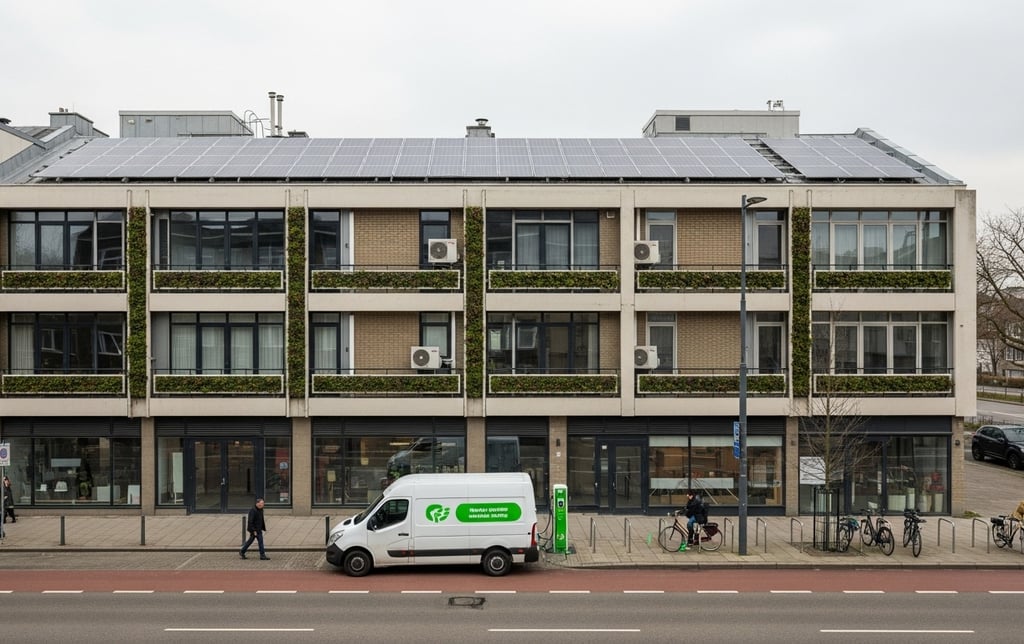Quality and technology IN CONSTRUCTION
delivered with STRAIGHT communication
Regenerative Design – Why Net-Zero Is Only a Half-Measure and How Cities Can Become Carbon Sinks
The article argues that the next frontier beyond net-zero is net-positive regenerative design—buildings that absorb more carbon than they emit and restore local ecosystems. Using Asian case studies, emerging materials, and a five-step action plan, it shows why this shift is both technically feasible and financially rewarding.
CONSTRUCTIONTRENDPROJECTMANAGEMENTSUSTAINABILITYFUTURE
Dr. Toldy Gábor - Toldy Construct
7/7/20253 min read


Regenerative Design – Why Net-Zero Is Only a Half-Measure and How Cities Can Become Carbon Sinks
1. The Era of “Doing the Minimum Harm” Is Over
In the fight against climate change, the net-zero mindset has become the entry-level requirement: we eliminate operational CO₂ emissions, yet barely touch the burdens embedded in the full life-cycle—from raw-material extraction to demolition. A recent conceptual review on ScienceDirect points to the next step: net-positive or carbon-negative design, where a building not only “does no harm” but measurably improves environmental conditions, chiefly in its energy, water and material balance.
(sciencedirect.com)
2. From Capital-Market Logic to Regenerative Returns
To borrow Dr Gábor Toldy’s phrasing: investors have so far tried to shift from CapEx to Green-CapEx to harvest ESG points. The regenerative model, however, demands an entirely new ROI map. According to a 2024 position paper by the World Business Council for Sustainable Development, net-positive portfolios recoup their higher up-front costs within 7–15 years through lower operating expenses and green-finance premiums.
(wbcsd.org)
This only materialises if the legal framework forces life-cycle thinking—that is, if it accounts for both operational and embodied carbon as well as biodiversity loss. The same logic resonates in Toldy’s 2014 thesis, which revealed a correlation between construction regulation and GDP impact.
3. Asia’s Test Beds: Labrador Tower & I·PARK1
Labrador Tower, Singapore – a “super-low-energy” skyscraper. Hybrid active-chilled beams are paired with underground thermal storage, AI-driven micro-climate management and several thousand square metres of green façade; the tower produces 120 % more renewable energy than it consumes.
(businessinsider.com, labradortower.com)I·PARK1, Hong Kong – one of the world’s largest offshore waste-to-energy hybrids. The artificial island converts 1.1 million t of municipal solid waste per year into biogas and compost, while coral-friendly seawalls protect local biodiversity.
(cnsd.gov.hk, arup.com)
Critical note: Despite their flagship status, both projects raise questions about the embedded carbon of the high-strength steel and glass used in construction. Until standards enforce material banks (circular material passports), the net-positive label remains only partial.
4. Material and Technology Innovations for True Carbon-Sink Buildings
Biochar-based concretes and bamboo composites can achieve carbon balances of up to -250 kg CO₂ /m³, yet industrial scaling is slow due to manufacturers’ risk aversion.
(sciencedirect.com)The Living Building Challenge (LBC), version 5.2, now makes the “Carbon-Positive Vision” mandatory—projects must operate with a negative CO₂ balance for 20 years after occupancy, including the material cycle.
(living-future.org)Digital twin + real-time emission monitoring (c-BEMS)—the EU Green Digital Coalition’s pilot standard delivered 12–18 % energy optimisation in demonstration buildings for an extra 3–5 % capital cost.
(greendigitalcoalition.eu)
5. Biodiversity-Friendly Urbanism: Bringing Nature Back as Infrastructure
A comprehensive 2025 literature review found that districts equipped with green-blue infrastructure (rooftop forests, rain gardens, urban meadows) enjoy a 20–30 % increase in pollinator species richness, boosting ecosystem services such as natural cooling.
(sciencedirect.com)
Data from the World Economic Forum show that “nature-positive” neighbourhoods see real-estate value appreciation 5–12 % higher than conventional developments—making biodiversity-friendly construction an immediate economic advantage.
(weforum.org)
6. Europe’s Response and the Domestic Lesson
In 2025 the EU launched its first institutionally net-positive public building in Seville, generating 125 % of its own annual energy use from renewables. The project serves as a pilot for the directive that will tighten the Renovation Wave from 2030 onward.
(european-union.europa.eu)
Hungary, meanwhile, has yet to fully implement even the “nearly zero” requirement. Without transparent life-cycle cost analysis and mandatory Building Information Modelling (BIM), investor incentives are distorted and “green-washing” remains cheaper than genuine regeneration. Toldy’s 2022 analysis likewise warned that a soft regulatory environment ultimately drags down GDP through grey- and black-market chains.
7. Action Plan – Five Steps to a Genuine Net-Positive Building
Regulate full life-cycle cost and carbon accounting (LCC + LCA).
Regenerative material benchmark: from 2028, at least 20 % biogenic or up-cycled content in all public projects.
Living green-blue infrastructure quota: a minimum of 40 % of each plot must be ecologically active surface.
Digital twin + open data: real-time energy and water monitoring for every building over 5 000 m².
Community benefit ledger: mandatory social-impact assessment (local jobs, climate-resilient public spaces) as a condition for occupancy permits.
8. Conclusion
Regenerative architecture is not a “marketing luxury” but a future-proof operating model for cities—especially in an economy where fossil-fuel price shocks and the biodiversity crisis simultaneously threaten competitiveness. The real yardstick is no longer how little damage we cause, but how much value we create for the ecosystem and society.
As Gábor Toldy puts it: “The built environment is not an end in itself but a tool for renegotiating the balance between the economy and the biosphere. The only question is whether we are bold enough to tip the scales to the positive side.”
Construction
With over 20 years of experience in general contracting, our company specializes in the flawless execution of unique, bespoke buildings. Our innovative methods and mindset make us stand out in the market.
Our services
Contacts
company@toldyconsult.hu
+36 30 289 2383
© 2024. All rights reserved.
Our WEBPAGES
www.toldyconsult.hu
